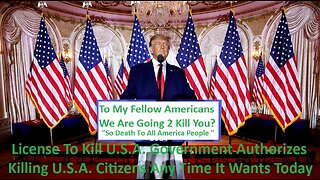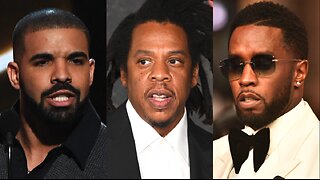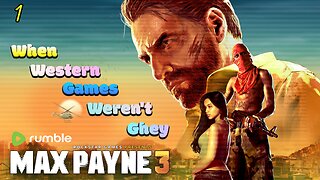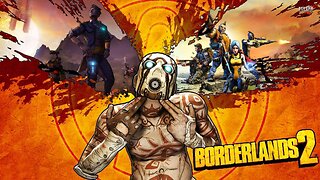Good and The Bad Life in IRAN Before and After The Economic Islamic Revolution !
Iran • Mostly arid plateau around 4,000 ft. • 67,000,000 population • 31% under age 15 • 66.4% urban • 2nd largest oil exporter within OPEC • 51% Persian, 24% Azeri, 7% Kurd • 89% Shia Muslim • $7000 GDP per capita • 16% Unemployment • Life expectancy 69.3 • 72% Literacy • 4.1% women in the Majlis • No separation of powers among Supreme Leader, Guardian Council, Assembly of Religious Experts, and Expediency Council • Theocracy—rule by religion • Has some democratic elements—popular sovereignty, separation of powers, individual rights, elections • RENTIER STATE—a country that obtains lucrative income (most of its revenue) by exporting a raw material like oil or leasing out a natural resource
Problems Faced by Rentier States • Resource could be depleted • Lack of diversification in local economy—nothing else is developed • Dependence on world market causes price fluctuations/instability. Economy can fail due to price fluctuations. • Income inequality is exacerbated • No incentive to modernize/industrialize • Increased opportunity for corrupt usage of income from rents • Lack of accountability to citizens since no tax system required—citizens have no voice/diminished civil society • No foreign direct investment
Iranian History 1501-1925 • 1501-1722 Safavid Dynasty rules Iran, coverts most from zoroastrianism to Shi’ism, makes it state religion, introduces Majles. 1722 invasion ends reign • 1794-1925 Qajar Dynasty rules (1) 1st try to reconstruct theocracy (2) 2nd try to achieve modernization (western style) (a) economy (similar to ISI) (b) reorganize the military (c) reform the bureaucracy
1906 Constitutional Revolution under Qajars • An experiment with democracy based on Belgian/British model (elections, separation of powers, elected legislature, popular sovereignty, Bill of Rights guaranteeing equality, freedom of expression) • The revolution was an attempt to modernize Iran • Prompted largely by changes sparked by modernization • Result was a constitutional monarchy • Only Shia could hold offices • Reza Shah comes to power through the Coup d’etat of 1921—democracy had crumbled into squabbling, authoritarian state
Rule of Reza Shah/Pahlavi Rule Reza Shah’s objectives a. state led capitalism (German style) b. modernize and reform Iran c. restrict the power of the clergy and aristocracy d. build strong economy through cultural engineering (1) change dress style to western (2) promote secular values (3) make popular culture compatible with requirements and goals of development Reza Shah’s accomplishments a. eliminated hereditary privilege b. did away with titles and asked people to select family names c. Took telegraph away from British control d. built roads & infrastructure e. built a railway from the Caspian Sea to the Persian Gulf f. establish secular, public schools and changed name to Iran g. reduce clerical authority h. 1935 abolished veil for women and encouraged both men and women to adopt European dress i. RENTIER STATE—dependent on other states for its income, heavily supports state expenditures j. Import substitution industrialization
1940s-1960s History • Reza Shah Pahlavi is forced to abdicate during WW II in favor of his son, Muhammad Reza Shah Pahlavi • 1956: PM Muhammad Mossadegh comes to power, nationalizes oil industry. Leads a party called the “National Front” • US and British intelligence services overthrow Mossadegh and restore the Shah
The White Revolution (1963) The Shah announced a program for reforms that were popularly endorsed: • land redistribution • nationalization of the forests • sale of shares in government owned factories to underwrite land reforms • sharing of factory profits with workers • electoral reform • enfranchisement of women • creation of a literacy corps • Revolution countered “RED” influences • Majles became a rubber stamp • Iran became a corporatist state with patron-client relationships embedded
The Islamic Revolution of 1979 • Despite successes (real or perceived) of the White Revolution, rumblings of discontent could be heard in Iran as early as 1963 • Severe economic and social dislocations from White Revolution • Shah had ruled using imprisonment and death for insurgents • Perceived as totalitarian, Carter pushed for openness=disaster • Khomeini was charismatic opposition leader-- a real option • Government corruption was severe • Shia clergy provided an outlet for protest • Secularized too quickly • Patron-clientelism did not include interest group input, so corporatism never developed • In 1979 the Shah fell, leaving the country in January 1979.
3 Oddities of 1979 Revolution • The 1st Revolution in which the dominant ideology, forms of organization, and leadership cadres were religious in form and aspiration • This revolution was the first contemporary revolution in which a theocracy was established (modern revs were all AGAINST state and church) • Only modern social revolution in which the peasantry and rural guerillas played A MARGINAL ROLE • It was a classic J-curve revolution: declining oil prices and 20% inflation dented economic growth led to DISCONTENT—EXPECTATIONS NOT MET
How the Revolution Happened • The Revolutionary Coalition: • Urban poor: especially former rural dwellers who experienced the cultural chasm between tradition and modernity • Moderate middle classes that want political freedoms • Leftists • Bazaar merchants (controlled broad networks—could bring commerce to a standstill) • The clergy: had solid communication networks, financial independence, credibility from decades of opposition to Shah • ARMED FORCES WERE “NEUTRAL” • 99% of people voted to endorse new Constitution written by “Assembly of Religious experts.” (75% voted)
The Khomeini Government 1979-1988 Institution of the Islamic State 1) Khomeini accomplishments -centralize the role of the state -set up a Marxist economy -adopt absolute rule with religious authority—”Jurist’s Guardianship” -establish the Islamic Republic of Iran *the term coined by Khomeini to suggest factions (republic) but final authority by the caliph *Luck: Oil prices rebounded, providing money for social services, medical care, etc. *Luck: Iraq War unified Iranians 2) Institutions of Government created/revised a) Parliament b) President c) Assembly of Experts d) Supreme Leader e)Guardian Council f) Supreme National Security Council g) Armed Forces h) Expediency Council i) Judiciary 3) dissatisfaction with poor socio economic conditions and “tiredness” with making sacrifices were pervasive by 1989
1989 forward • Khomeini was succeeded by the Ayatollah Khamenei • Power began to shift back to the Presidency • The President in 1989 was Ali Akbar Hashemi Rafsanjani, who was a hard liner and closely allied with Ayatollah Khamenei • In the 1992 elections, the two held on to power • 1997 elections: a moderate, Mohammad Khatami won • 2002: Declared a member of the “Axis of Evil” by President George W. Bush
The Iranian Executive • “Supreme Leader” or faqih chosen by 86 member “Assembly of Religious Experts” a.k.a. “Chamber of Experts” • Supposed to defend Islam, ensure laws acceptable • Appoints/removes head of judiciary • Appoints/removes ½ (6 members) of Guardian Council (approves candidates) • Appoints head of military and may command armed forces • Declares war and peace • Most famous: Ayatollah Khomeini • Current: • More powerful than Iran’s President, may overrule or dismiss the President and eliminate Presidential candidates
Iran’s President • 1989: PM abolished • Needs absolute majority of votes, 4 year term—2 term maximum • Must be “well known political personality”—Guardian Council has used this to ban women • June 2005: Election--Mahmoud Ahmadinejad, hardline mayor of Tehran, defeats Rafsanjani • Devises the budget, supervises economic matters • Proposes legislation to Majles • Executes policy • Signs treaties, laws, and agreements • Chairs the National Security Council • Selects vice-presidents and cabinet ministers • Approves provincial governors, town mayors, and ambassadors • Abol-Hasan Bani-Sadr removed in 1981 for criticizing regime as dictatorship
Council of Guardians • 12 member council • 6 clerics + 6 lay members (lawyers) • All men • Has veto power with Supreme Leader over Parliamentary legislation—did so with Press Control law repeal • Determines who can run in local, Presidential, Parliamentary, and Religious Experts elections • Work with Supreme Leader to exercise “jurist’s guardianship”
Assembly of Religious Experts • 86 members • Elected popularly and directly but it’s all clerics. 1998 revisions do allow non-clerics but none elected yet • No females allowed • Candidates must pass religion test to qualify • Chose Ali Khameini in 1989
Council for the Expediency of the State • Created 1998 • 32 leading political personalities appointed for 3 year terms, may now originate own legislation • Members: • Heads of 3 branches of government (President, Chief Justice, Speaker of the Majles) • 6 Clerics of Guardian council • Anyone else Supreme Leader wants • Resolves policy disputes between Guardian Council and Majlis
Islamic Consultative Assembly (Majlis)-- Legislature • 290 deputies, 4 yr terms, semi-free elections, must be 15 to vote • All candidates must be cleared by “Council of Guardians” (council may veto any law not consistent with “the Revolution”) • Speaker has emerged as major position; Rafsanjani used it as springboard to Presidency. Now Akbar Nateq-Noori • Makes laws, interprets laws with Judiciary, 6 members on Guardian Council, investigations, removes Cabinet ministers but not President, approves budgets/treaties/appointees of President • Elections to the Majlis of Iran were held on February 20, 2004. A runoff was held on May 7, 2004, which filled 39 seats where no candidate gained sufficient votes to win in the first round. • The elections took place amidst a serious political crisis that developed due to the January 2004 decision of the conservative vetting body, the Council of Guardians, to ban thousands of candidates from running -- nearly half of the total.
A vast number of reformists, including some of their leaders, and particularly members of the Islamic Iran Participation Front (IIPF), were barred from running. In many parts of Iran, there weren't even enough independent candidates approved, so the reformists couldn't form an alliance with them. • Out of a possible 285 seats (5 seats are reserved for religious minorities: Christians, Jews, and Zoroastrians), the participating reformist parties could only introduce 191 candidates. Some reformist parties, like the IIPF, announced that they would not vote. Moderate reformists, including President Mohammad Khatami, urged citizens to vote in order to deny the conservative candidates an easy majority. • While many pro-reform social and political figures, including Shirin Ebadi, had asked people not to vote, the official turnout was about 51%. Even in Tehran and its suburbs, a stronghold of reformist sympathies, turnout was about 28%, and one of the conservative alliances, Etelaf-e Abadgaran-e Iran-e Eslami, won all of the city's 30 seats. There are rumors that some voters were transferred to Tehran or other big cities from other areas by some of the parties, and a claim that the Municipality of Tehran, whose mayor backed the same alliance, was advertising for the alliance illegally, using the government's budget. • Day before the election--reformist newspapers Yas-e-no and Shargh were banned. • The preliminary results of the elections showed a victory by the conservatives. A basic comparison of the partial lists indicated that even among the seats where the reformist alliance had a candidate, only 28% (30 out of 107) were elected.
Iranian Judiciary • NOT an independent judiciary, enforces shari’a and qanun (statutory law). Judicial review in the sense that qanun may not violate shari’a • Supreme Leader appoints cleric to be head judge • Religious zealots (hezbollahis) recruited from ranks of urban poor (bazaaris)= stormtroopers • Enforces censorship laws to curtail public debates • Shut down 100 newspapers and magazines 1997-2004 • Banned interest on loans as usury • Death penalty mandated for adultery, homosexuality, drug dealing, and alcoholism
Iranian Military • 540,000 active troops (8th largest) • Some long range missiles • Developing nuclear weapons • Revolutionary Guards developed in case military gets reformist ideas
Political Parties/Elections • Finally re-legalized in 1998 • Islamic Iran Participation Front: Reformist, formed after 1997 election of Khatami. Run by Muhammad Reza Khatami (his brother). Did well in 2000, many candidates blocked by Guardian Council in 2004. Helped Muhammad Khatami win re-election • Servants of Construction Party: Grouping of technocrats loosely allied with former President Rafsanjani • Assembly of Combatant Clerics: Muhammad Khatami’s party. Left wing, pro-reform. • Conservatives: several different parties, biggest is Ahmadinejad’s Islamic Society of Engineers • Almost 1 election/year: ingrained • 15 is voting age • High voter turnout • Candidate to seat ratio is 10:1 or more • Sharia, the canonical law of Islam, is the basis for the Constitution and therefore elections
Bureaucracy • Revolutionaries purged bureaucracy • Doubled in size since 1979 though • College and Hs graduates • Second strata is conservative technocrats • Military= Regular Army + Revolutionary Guards (internal security) • New ministry: Culture and Islamic Guidance (censors media) • Reconstruction: expands social services, sees that Islam expands into the countryside • Intelligence, Interior, Justice, Culture headed by clerics, often other posts go to their relatives • Result= clientelism, corruption, mismanagement, patronage, ideological, nepotist • Some semipublic institutions from confiscated pre-1979 wealth, “Martyr’s Foundation”
Political Culture • Shiism: “Hidden Imam” will return. Union of religious and political authority through sharia (Islamic law). Sharia is an essentail base of legitimacy • Authoritarianism, but not totalitarianism (relieves some pressure for reform) • Escaped from European colonization—will not be same as Mexico, Nigeria • Geographic limitations: Not much arable land, plenty of oil, most Iranians live in cities and the northwest • Ancient Persian influences (architecture, literary works, decorative arts) • Mass media severely curtailed, 20 newspapers shut down in 1979, 7 more by 1981. • 1981 law: crime to use “pen or speech” against the government • 2000: Reformists elected, outgoing legislature enacted “press control law,” which Guardian Council has ordered cannot be overturned by the new legislature
Cleavages • Religion (10% Sunni, <1% Baha’I • Ethnicity (51% Persian, 24% Azeri), various ethnic uprisings have all been put down • Reformers vs. Conservatives • Statists vs. Free marketers (Bill to allow 100% foreign ownership, up from 48%, vetoed by Guardian Council) • Resistance to clerical rule by fiat is strongest among middle class– increasingly urbanized, educated, and young. Peasantry and lower class support the regime. • Most upper class left the country in 1979
Civil Society • Cultural Revolution in schools—revolutionaries made schools teach orthodoxy. Western sympathizing professors fired and replaced (like Cultural Revolution in China) • Intellectual prosperity has flourished under a repressive regime • No criticism of Islam or clerics permitted • Mild criticism of government OK • About 200 well respected journals present • Participation high • 1999 studenbt uprising crushed • Revolutionaries tried to crush pre-1979 culture, eventually decided they would have to coexist/co-opt it
Political Participation • Huge gaps in values between different social groups • Western influence over upper/middle classes • Millions took action during Revolution, elections—students and youth now have enormous political weight • Women’s participation has gone up • Dissuaded when government assassinated over 100 ethnic, leftist, and monarchist forces living in the WEST. • Protests remain (1999 shutdown of college newspaper), factory workers protest now
Gender • Divorce and custody laws now follow Islamic rules—bad for women “Equality with difference” • Veil a symbol of oppression • Scarf and long coat in public required • Women must have consent of male relatives to leave the country • Occasional stonings for adultery, although they have been banned • Runaway girls, prostitution widespread • 27% of labor force is women • Boys and girls do attend school at same rate • Not well represented in Majles
Political Economy • Khomeini: “Economics is for donkeys.” • Pressures during 1980s: • 1) Nationalization of many large firms • 2) Massive emigration of skilled workers • 3) Decline in Western investment • 4) Oil price drop • 5) 8 yr Iraq war • Pragmatists wanted economic recovery, opposed by conservatives who wanted no reforms, keep West out • Guild and professional organizations are weak—citizenry have multiple occupations and rapid employment turnover
Economy • Oil 85% of exports—rentier state • Suffers from lack of diversification, dependence on world market/price fluctuations, exacerbates income inequality, corrupt usage of rents • Lack of raw materials and spare parts • 16% Unemployment • 15% inflation • But education and health care have improved • Bazaar merchants have constituted backbone of economic flows • A myriad of quasi-private foundations and religious endowments manage state-owned enterprises to aid the poor (Shah’s old fortune) • Iran has applied for WTO membership despite reservations about Western domination, nothing against cooperation, just domination. • Iran will need outside help with infrastructure, developing additional oil resources • Declining birth rate will help; mandatory sex ed classes for engaged couples • Iran did not sign Kyoto Treaty but has gotten World Bank aid to clean up air pollution • Afghan and other refugees have been a strain on the economy • Country suffers from air polllution (not Kyoto signatory), deforestation, desertification, water contamination
Iranian Foreign Policy • OPEC Member • Some advocate warmer ties with foreign investors, possibly readmitting US dollars • Tourism industry almost dormant now • Money a coward; Iran the classic example • Large refugee population: Afghan, Iraqi, Kurd • Large diaspora abroad—government tries to court them, most demand things the government cannot or will not provide
Learning Objectives After mastering the concepts presented in this chapter, you will be able to: • Understand the key moments of the historical formation of Persia and Iran. • Recognize the importance of complex religious and political challenges in process of understanding of Iranian politics and society. Define the following: Shiites, Sunni, Muslim, Arab • Discuss the complicated evolution of Iranian politics. • Comprehend the importance of religious intolerance and challenges in the Iranian state throughout the history. • Discuss the role of theocracy in the process of Iranian political development. • Understand the evolution of Iranian state in 20th century and define key elements of revolutions in Iran. Briefly discuss the role of the following leaders: MahmoudAhamdinejad, Ayatollah Ali Khameni, Ayatollah Khomeini, Ayatollah Rafsanjani, Shah Mohamed Reza, Shah Reza
Learning Objectives After mastering the concepts presented in this chapter, you will be able to: • Define Iranian geography and current economic challenges. • Understand the process of political, economic and social developments of Iran. • Understand the role of Constitutional Revolution and White Revolution in Iran. • Discuss the key elements of Iranian state institution. Define the following: Assembly of Experts, Expediency Council, Guardian Council, Majlis, Supreme Leader • Understand the specifications of Iranian political culture and participation. • Understand the challenges of democratization in Iran. • Comprehend the challenging process of the development of Iranian international positioning as an important regional and international challenges of international stability and nonproliferation.
Qajar Dynasty,1779-1925 • Agha Mohammad Khan of the Qajar tribe • Monarchs lacked political or religious prestige • Power of clergy (religious officials) increased
External Influence • Britain and Russia compete to expand their empires into Iran • Treaties between the three countries give Britain and Russia a lot of economic & trading privileges as well as territory in Iran
The Constitutional Revolution, 1906-1911 • Protestors want political change • Shah creates parliament (Majlis) & constitution • People are citizens and have voice in gov’t • Even with constitution, Iran is weakened by control of Britain and Russia Bakhtiari Revolutionaries in camp outside Esfahan (June 1909)In front, in a white coat with a sword, is Mohammad Ebrahim Khan, Zabet of Julfa.
Iran & WWI, 1914-1918 • Iran neutral • Effects • Economy decreases • Parts of Iran taken by Allied powers • Russia withdrew from Iran after their revolution
Pahlavi Dynasty,1925-1941 • 1921 – Reza Khan led forces into Tehran, Iran • Wanted shah to elect Prime Minister • 1923 – Reza Khan chosen as new Prime Minister • 1925 – Majlis appoints Reza Khan the shah (ends Qajar Dynasty)
Iran in WWII • British, U.S., & Soviet troops occupied Iran • 1941 – Shah Reza Khan abdicates • Gives power to son Mohammad Reza • Effects • Hurts Iran’s economy • Weakens Iran’s gov’t • Famine
Iran & Oil • Iran’s oil production controlled by Britain’s Anglo-Iranian Oil Company (AIOC) • Protests begin against foreign control of oil • Anger over the Supplemental Oil Agreement and the shah’s use of bribery/fraud cause uproar • Politician Mohammad Mossadegh leads protest for new fair elections of Majlis • 1951 – Mossadegh forms National Front, is elected PM, & nationalizes the AIOC
Problems with West Begin • Britain leads boycott of Iran & increases military forces • British officials expelled from Iran • U.S. and Britain successfully sponsor a coup (overthrow) of Mossadegh in 1953
What about Mohammed Reza Shah? • “Dictatorship” from 1953-1960 • Reza Shah Pahlavi is supported by U.S. and Britain (due to oil) & is Pro-West • The people of Iran do not necessarily agree • Disbands National Front & imprisons its members • Forms SAVAK, a secret police to hunt down opponents • Mistreatment, torture, execution • Limits public expression and ideas • People are oppressed and in poverty
The White Revolution, 1963 • Shah’s reform program to reduce dissatisfaction and unrest • Redistribute land • Women given more rights • Privatization of industries • Increase literacy (Literacy Corps) Shah distributing land deeds
The Iranian Revolution - Ayatollah Khomeini • Ayatollah = cleric, Islamic scholar • 1963 – Ayatollah Ruhollah Khomeini criticizes the Shah’s reforms and gov’t • Ayatollah Khomeini is against Western influences in Iran • Saw Shah’s rule as hurting Islam • Shah orders Khomeini to be exiled • Protests break out, thousands killed
Problems in Iran • Economy worsens • Human rights violations • Demonstrations against the shah continue in 1978 • Hundreds of protestors killed. Anarchy & Revolution The Shah flees Iran on 1/16/79. Ayatollah Khomeini Leads the Revolution Khomeini returns to Iran on February 11, 1979.
Islamic Republic of Iran New Constitution created Ayatollah Khomeini as Supreme Islamic Jurist (Supreme Leader) Had religious & political control. American Embassy in Tehran Taken Over, Americans taken hostage Iranian students worry that U.S. will stage another coup. 52 Americans Held Hostage for 444 Days Released in Jan., 1981 (Reagan took the U.S. Presidency) The Khomeini Revolution. Support for the Palestinian Cause Funds Hamas and Hezbollah. The Ayatollah with Yasir Arafat of the PLO.
The Iran-Iraq War(1980-1988) Iraqi leader Saddam Hussein feared that Iran’s new leadership would conflict with the Sunni/Shi’a balance in Iraq (Iraq is mainly Shi’ite). Also wanted oil resources in Iran. Iraqi Soldiers At the Front • 375,000 Iraqi casualties & 60,000 POWs! Iranian Soldiers • Over 1,000,000 Iranian casualties! Iran Since the Death of the Ayatollah Khomeini
Khomeini’s Death, June 1989 He is succeeded by Ayatollah Ali Khameni as Supreme Leader.
Mahmoud Ahmadinejad • President of Iran, 2005 – present • Succeeded Ayatollah Khatami • Conservative • Supports Iran’s uranium enrichment program • Peaceful or for nuclear weapons? • Not in favor of Israel’s statehood • Not a friend of the West • Economic problems, human rights issues Another Nuclear Power? US satellite photo of Iranian nuclear facility near Arak.
The killing of Mahsa Amini while in the hands of Iran’s Morality Police six weeks ago was yet again an example of violence against women perpetrated by the Islamic Republic—and the violence has been not only physical, but social, legal, and economic as well. The constitution of the Islamic Republic guarantees equality of all its citizens under the law; but, in practice, the state continues to discriminate against women. Four articles of the constitution address issues related to women, but all within the framework of Islamic law provide ample room for discrimination. Neither the constitution nor the civil status law protects women’s rights.
Under the Islamic Republic, physical violence against women starts in the home and extends into the society. While today Iran is a male-dominated country, before the 1979 Revolution, the state did not impose a uniform dress code on women; women were free to choose to veil or not to veil. Within weeks of the revolution, however, the Islamic hijab become mandatory. Men welcomed it; it gave them the means to control their women folk. But most women, especially women of the younger generation, rejected this attempt by the state to dictate how they dressed. When they came out to protest on the streets of Tehran, they were attacked by vigilantes, and the police did nothing to stop the attackers.
Since then, women have ignored the dress code in small and increasingly bolder ways, and they have paid for it. Under the law of retribution, adultery is punishable by stoning and violating the hijab is punishable by seventy lashes. Many young and middle-aged women received this punishment—a striking example of the state practicing corporal violence against women.
The Islamic Republic imposed other legal manacles on women. The pre-revolution and hard-won personal status law was suspended. This meant a man could once again unilaterally divorce his wife and notify her by mail. Child custody was only granted to the mothers under strict conditions until the child reached a certain age. The age of marriage for girls was reduced to nine (the supposed age of puberty) for girls. Family courts, where women could seek recourse on a range of issues including domestic violence, which was on the rise, were suspended. Polygamy was once again permissible, allowing men to take a second, third, or fourth wife without the permission of his existing spouse(s). During the Iran-Iraq War, the late president Ali Akbar Rafsanjani urged women to patriotically let their husbands to marry war widowers.
In fact, during the eight-year Iran-Iraq War, many families lost their male bread winner; the number of families run by women grew, and women were forced to join the labor force to feed their families, while at the same time look after their children. Yet they faced employers who preferred to hire men; even professional middle class women were forced to settle for menial jobs for which they were overqualified. This has remained the pattern in the Islamic Republic. Employers feel more comfortable with male employees. Many working women in Iran with whom I’ve talked over the years spoke of the discrimination and male resentment they faced at their places of work. One friend told me: “Violence does not necessarily mean being beaten up by your husband; it is also your employer, not even looking into your eyes, informing you he preferred to give a promotion you deserved to your male colleague because, after all, he is the bread winner in the family.” This is an attitude encouraged by the state.
A striking feature of the current widespread and continuing protests in Iran, which are pushing the country to the brink of revolution, is they were triggered by violence against a woman. It was women who came out into the streets with the slogan, “Women, Life, Freedom.” One can add that, bizarrely, when it comes to the use of brutality to crush these protests, the regime is treating men and women equally. Women, like their male counterparts, have paid dearly for demanding an end to violence, for the rule of law rather than of religion, for equality under the law, and for economic opportunity for all, not just the men in power. So far, at least 1000s women have been killed, and a large number of women have been arrested. women and young girls, as well as men, are being physically abused and raped — another horror account of what they face in prison simply for protesting peacefully on city streets.
The first authoritative study into female genital mutilation in Iran has found the practice is being carried out in at least four major provinces while officials are silent on the matter.
According to research by social anthropologist Kameel Ahmady released on Thursday, FGM is more prevalent in the southern province of Hormozgan and its nearby islands (Qeshm and Hormuz) than in any other parts of the country.
It is also being practised to a lesser degree in Kurdistan, Kermanshah and West Azerbaijan provinces, which are situated in western Iran close to the Iraq border.
Ahmady’s research shows that FGM is mainly an issue concerning the Shafi’i sect of Sunni Muslim Iranians, a minority in the Shia-dominated country. Only a small fraction of the Shia population living in proximity of Sunni communities practise FGM.
“FGM is practised in Iran in some cases to tame girls’ sex drive before marriage; it is made to preserve their chastity,” said Ahmady. “The attitude of officials and authorities is that FGM doesn’t exist in Iran. The Iranian public is also largely ignorant about the subject.”
Ahmady first decided to focus on FGM in Iran when he was working with relief NGOs in Africa in early 2000s. Over the course of 10 years he has spoken to around 3,000 Iranian women who have experienced FGM in Iran, as well as 1,000 men. His research was published to coincide with the International Day of Innocent Children Victims of Aggression, observed every year on 4 June.
“I returned to Iran in 2005 to study FGM in my home country and instantly I was shocked to discover that it even happened to the closest members of my own family and relatives,” he said. “In fact, many in Iran don’t have a clue that [FGM] is being practised in some parts of the country.”
FGM, which has affected millions of girls and women alive worldwide, predates Islam and Christianity and has been practised in many different cultures and societies, from Coptic and Catholic Christians in Eritrea and in Ethiopia, to Beta Israel society, Australian aboriginal tribes and some parts of the Middle East and Asia. It is usually performed on girls between the ages of four and 12 and can include partial or in extreme cases total removal of external parts of female genitalia.
In Iran, the practice, referred to as Khatne or Sonat, is usually carried out outside hospital without anaesthesia or prior consent by amateur midwives. The tools used include sharp razors.
Mehrangiz Kar, a leading Iranian human rights lawyer, said it was tragic that such mutilation was carried out by women. “It’s one of those instances where the violence against women is carried out by women in unhygienic circumstances,” she told the Guardian. “In areas where FGM exists, unfortunately it’s usually the mothers who insist that their daughters should be cut.”
In at least one extreme case which had involved stitching up after cutting, Kar said an Iranian mother refused to allow her daughter to have her stitches removed before marriage. “The daughter told me that she was afraid of marriage; she feared she would have pain during sexual intercourse.”
Although Ahmady’s research is unprecedented in its depth, other people have also studied FGM in Iran, including Fatemeh Karimi and Rayehe Mozafarian, who have both published books on the subject. Mozafarian said that the Iranian authorities had let activists research FGM in Iran and had allowed those books to be published.
“When people in Iran learned for the first time seven or eight years ago that women are being cut there, it was a cultural shock,” she said. “People didn’t believe that it was being practised.”
Mozafarian said she had reached out to the country’s vice president for women’s affairs, Shahindokht Molaverdi, who is considering her proposal for a nationwide campaign to end FGM. Iran’s penal code criminalises mutilation but does not specifically mention FGM.
Mozafarian warned that in some parts of Khuzestan province, home to many Arab Iranians, an extreme form of FGM known as infibulation, which involves the removal of the clitoris as well as the narrowing of the vaginal opening by creating a covering seal, is being practised.
Influenced by events in the neighbouring Kurdistan region of Iraq, which prohibited FGM in 2007, female circumcision is in decline in Iran’s Kurdistan but still goes on. Hormozgan is less affected by that change.
Not all Sunni Iranians practise FGM, such as those belonging to the Hanafi sect or those living in other provinces. In West Azerbaijan, FGM exists among Sunni Shafi’i Kurds of Sorani dialect but not among Sunni Shafie Kurds of Kermanji dialect, Ahmady’s report shows. In Iran’s Kurdistan, where prevalence of FGM is patchy, it is mainly seen in rural areas, some villages and communities but not usually in urban areas. Even in provinces where FGM exists, many communities do not practise it.
“The majority of women I spoke to who were circumcised defended FGM, saying that it is a tradition that had existed for hundreds of years,” said Ahmady. “Some Sunni mums even boasted that their daughters were more virtuous than the majority Shia girls because they were cut.”
Shia clerics also avoid interfering in what they see as a Sunni issue. The government, wary of inciting anti-Shia sentiment among the country’s Sunni minority, is also largely quiet. In Hormozgan, minimal traces of FGM is seen in Shia communities in some village, the report shows.
I hope you appreciated this article. Before you move on, I was hoping you would consider taking the step of supporting the Guardian’s journalism.
From Elon Musk to Rupert Murdoch, a small number of billionaire owners have a powerful hold on so much of the information that reaches the public about what’s happening in the world. The Guardian is different. We have no billionaire owner or shareholders to consider. Our journalism is produced to serve the public interest – not profit motives.
And we avoid the trap that befalls much US media – the tendency, born of a desire to please all sides, to engage in false equivalence in the name of neutrality. While fairness guides everything we do, we know there is a right and a wrong position in the fight against racism and for reproductive justice. When we report on issues like the climate crisis, we’re not afraid to name who is responsible. And as a global news organization, we’re able to provide a fresh, outsider perspective on US politics – one so often missing from the insular American media bubble.
-
 2:11
2:11
What If Everything You Were Taught Was A Lie?
8 days agoLicense To Kill U.S.A. Government Authorizes Killing US Citizens Any Time It Wants
6.28K6 -
 8:13:09
8:13:09
Akademiks
10 hours agoIs It OVER for DRAKE?? Industry and Fans Turned on him? Cassie Tryna not get CHARGED w/ Diddy?
65.1K95 -
 3:57:39
3:57:39
FusedAegisTV
6 hours agoMax Payne 3 (2012)... For Real Now | When Western Games Weren't Ghey #1 RUMBLE CREATOR HOUSE EDITION
14.9K5 -
 1:21:37
1:21:37
Roseanne Barr
2 days ago $103.27 earnedKevin Sorbo saves America | The Roseanne Barr Podcast #49
121K402 -
 38:57
38:57
The Why Files
1 day agoBackyard Time Machine: The Time Travel Mystery of Mike “Mad Man” Marcum
31.5K55 -
 3:58:52
3:58:52
Due Dissidence
14 hours agoBronx Trump Rally SPECIAL REPORT, Chappelle SLAMS Israel, Greenwald OWNS Dershowitz
37K67 -
 21:53
21:53
Breaking Points
16 hours ago5/26/24 AMA
17K9 -
 2:58:31
2:58:31
SonnyFaz
8 hours agoSNEAKO X SONNY NEW YORK TAKEOVER!
33.9K15 -
 2:13:04
2:13:04
vivafrei
16 hours agoEp. 212: Trump FBI Raid; Alex Jones' Lawyer Victory; Biden Ballot & MORE! Viva & Barnes
112K213 -
 6:38:26
6:38:26
PudgeTV
10 hours agoBorderlands 2 From the Content Creator House | Fortnite w Frag | Happy Memorial Day Weekend
50.1K10